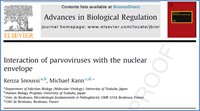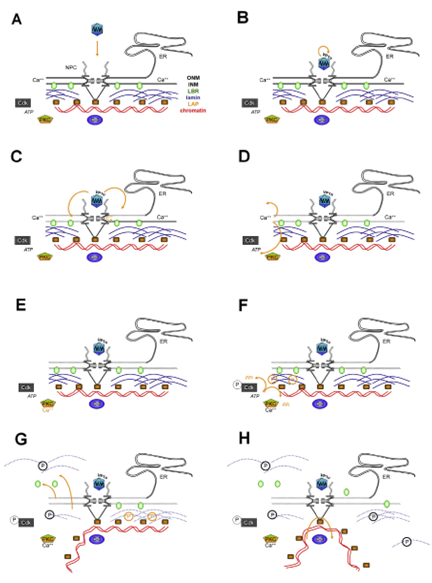Ms. Snoussi Kenza, 3rd year student, published a first author paper “Interaction of parvoviruses with the nuclear envelope” in Advances in Biological Regulation.
Interaction of parvoviruses with the nuclear envelope :
Parvoviridae family regroups viruses becoming famous for their oncolytic activity in the case of parvovirus H-1 (under clinical trial), or for their utility as a platform for gene therapy in the case of Adeno-Associated Virus (Glybera, used for the treatment of lipoprotein lipase deficiency). These viruses have a DNA genome that needs to reach the nucleus to replicate. However their nuclear transport remains ill-known.
To study this step, we first applied parvoviral capsids to permeabilized cells. The result does not show a nuclear import but a loss of nuclei within few minutes. Going further in that, we observed during experiments using time lapse microscopy, a release of host chromatin and lamin B receptor (a protein of inner nuclear membrane). We concluded that the loss of nuclear structure might lead to the fact that parvoviruses use another pathway than passing the nuclear pore. We have also observed that capsid proteins interact with different nucleoporins involved in active nuclear transport (Nup 358/153/62). Plus, the application of parvoviruses also induces the activation of both PKCα and cdks. Finally, experiments using permeabilized and microinjected cells show that nuclear permeabilization oocurs between 2-6 min.
In summary, we propose for parvoviruses, another pathway to the nucleus, based on nuclear envelope breakdown. Understanding its mechanism might be an interesting tool to investigate the cascades activity taking place upon this phenomenon.











